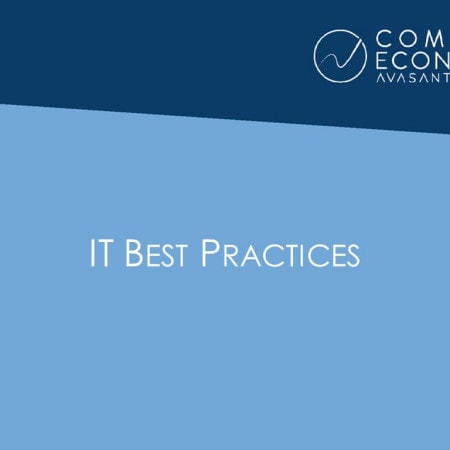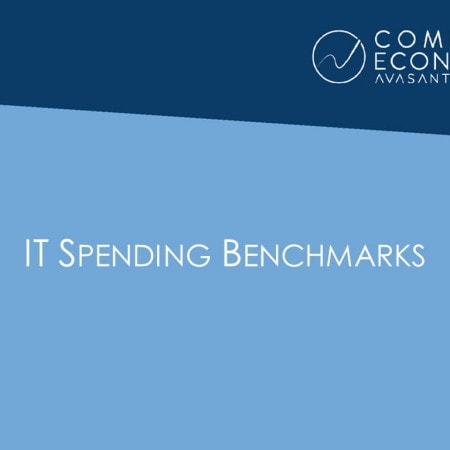-

Web Procurement Provides Major Operational and Maintenance Savings
Many organizations know that their paper-based procurement systems are expensive and inefficient, but too few realize that online procurement is a practical alternative. In particular, many small- to medium-size businesses fail to comprehend that cost-effective e-procurement for them is a reality today. This is not to say that IT managers should recommend that their organizations jump blindly into placing orders on the Web, but rather that a good plan will likely lead to a much improved procurement system. These improvements will not only cut costs but the quicker responses also will satisfy users.
March, 2002
-

Will Microsoft’s E-Business Plan Pay Off?
Long-time users of Microsoft products are finding themselves in that familiar but disconcerting position again as they enter the e-business realm. Just as Microsoft did with Windows and the Internet, it is once more planning on a grand scale, delaying software launch dates, and confusing potential customers. Despite these drawbacks, the likelihood of Microsoft eventually bringing successful electronic commerce to market is high. And if the products even come close to their grandiose goals, the software will solve many problems for electronic merchants.
March, 2002
-

2000-2001 Industry Rankings by Number of Companies in the Sector (Oct 2000)
One way some supply chain operators identify industries within the U.S. that may by likely to participate in supply chains in 2000 and 2001 is to determine which industries have the largest number of companies in them. However, before recruiting all of the most densely populated industries into supply chains it is important for supply chain promoters to also examine the amount of revenue that is likely to flow through supply chains in the given industry. A large number of companies in an industry may mean it is a good target for supply chain participation, but supply chain promoters should not stop there.
March, 2002
-

2000-2001 Industry Potential to Participate in Supply Chain Systems (Oct 2000)
To help organizations identify industries within the U.S. that have high potential for participating in supply chains in 2000 and 2001, Computer Economics ranked each industry by NAICS code in terms of its potential supply chain volume. Figure 1 shows the top ten industries that have the highest potential dollar amount flowing through supply chain systems in 2000 and 2001. The automobile wholesale sector's relative rank of 100.0 should indicate to supply chain operators looking to promote their systems that this industry has a high supply chain density and has many organizations to participate in new supply chains.
March, 2002
-

2000-2001 Industry Rankings by Revenue Volume (Oct 2000)
One way to identify industries within the U.S. that may by likely to participate in supply chains in 2000 and 2001 is to determine which industries have the largest amounts of revenue. However, before recruiting all of the top revenue industries into supply chains it is important for supply chain promoters to examine the portion of revenue that is likely to flow through supply chains in a given industry. Large volume in revenue is typically the first clue that the industry will participate in supply chains at a high rate during 2000 and 2001, but supply chain promoters should not stop there.
March, 2002
-

2000-2001 Potential of U.S. States to Participate in Supply Chain Systems (Oct 2000)
To help organizations identify areas within the U.S. that have high potential for participating in supply chains in 2000 and 2001, Computer Economics ranked each of the states relative to each other in terms of their potential supply chain volume. We concluded that California has the largest potential dollar amount flowing through supply chain systems. The state. s relative rank of 100.0 should indicate to supply chain operators looking to promote their systems that California has a high supply chain density and has many organizations to participate in new supply chains.
March, 2002
-

Identifying Locations and Industries With High Potential for Supply Chain Participation
When supply chain promoters must identify the best potential participants for their systems, several approaches can be used. The most effective technique is to determine which industries are likely to have the highest amount of money flowing through supply chains in the coming years. Looking at potential dollar volume in supply chains by state is another profitable way to find future supply chain participants. In addition, supply chain promoters may also look at the amount of total revenue in an industry as well as the total number of companies in the sector, but these are not as accurate measures.
March, 2002
-

Public B2B Exchanges Must Look Toward the Future (Dec 2001)
Impact from the soft economy was only one of the hits that public B2B exchanges took over the last six months. Not only have buyers grown more cautious as the economy has headed south, but also the tough business climate has made firms more competitive. Seeking an edge, many companies have been reluctant to accept terms from their suppliers that merely equal those of competitors. Lack of standards that streamline the supply chain are yet another weakness of these electronic marketplaces.
December, 2001
-

Online Payment Systems Are Essential for E-Commerce Success (Jun 2001)
Website buyers in the US spent over $26 billion during 2000. Computer Economics anticipates that purchases will grow to $36 billion in 2001, and that amount will almost double by 2004. Clearly, there is room for significant expansion of sales in e-commerce. The payment method that e-merchants offer will become one of the keys for success in this market.
June, 2001
-

E-Business Intensity Index: 1998-2001 (May 2001)
Computer Economics has conducted annual studies of e-business and information technology spending and deployment trends since 1990. The E-Business Intensity Index is a proprietary index established by Computer Economics to illustrate the relative importance of e-business among industry sectors and for individual organizations within a sector.
May, 2001
-

Perils and Profits Line the B2B Path (April 2001)
The reality of business-to-business (B2B) commerce is that purchasers seldom achieve a discount better than 5 percent more than they could have gained through negotiating in the old brick-and-mortar world. Many times the savings from B2B transactions are not even that good. This lack of savings from online trading helps explain the fact that purchasers have been slow coming to B2B and that most agreements they had with their traditional suppliers remain in place. Clearly B2B merchants will have to do better to wean buyers from their usual way of doing business.
April, 2001
-

Networked B2B Applications Point Toward the Future
A new direction in business-to-business e-commerce is emerging. Integration and collaboration are becoming the watchwords for new B2B ventures. The rationale for bringing suppliers, subcontractors, employees, and customers under a single Internet entity is clear. Returns expected from these collaborations is expected to be many times the investment and the return period will be measured in months, not years.
October, 2000

 Grid View
Grid View List View
List View